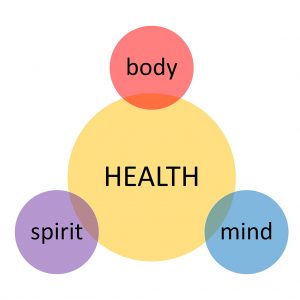Rinse and Repeat – Step 11 of 11
In the last OneThingology Blog post, we talked about Step 4, or Elevate the Constraint, Today we will look at the last step in this 5 step process, Rinse and Repeat.
For context, lets review our Five Steps one more time.
- Identify the Constraint
- Exploit the Constraint
- Subordinate every other decision to the Constraint
- Elevate the Constraint
- Rinse and Repeat
As much as I like to substitute Rinse and Repeat for the actual wording of step 5, in this blog post I’m going to go back to the original wording, as it is actually quite important.
Step 5 as stated by Eli Goldratt is: “If in the previous steps a Constraint has been broken, go back to Step 1. But Do Not Allow Inertia to Cause a System Constraint” (emphasis is Eli Goldratt’s). So Rinse and Repeat is perfectly appropriate, but we have to keep in mind that many times during the Exploit, Subordinate and Elevate process, we may create some written, spoken and/or unspoken rules and/or policies to address the Constraint, but once it’s broken, those rules and/or policies may no longer apply, thus we should not allow Inertia, or our now out of date rules and/or policies to become a Policy Constraint.
The admonition is simple, make sure you review all the rules/policies you created in the process of Exploiting, Subordinating and Elevating the Constraint, and be certain they do not become Policy Constraints. Don’t let Policy Constraints pull your strings. Sounds simple, sounds easy, but like so many “easy” things in life, it’s easier said than done.
One consideration I think a lot of people miss is that you just might want to keep a Constraint where it is, or strategically move it somewhere you choose rather just break the current Constraint, and then go looking for the new Constraint. I personally chose this strategy for me and my company. I intentionally would drive the Constraint to me, and then try to keep it there (I manage me better than I manage anything or anyone else). It almost sound sacrilegious, but in fact, it is a strategy that works, and works well for many people and companies.
In our first post of this series (can you believe this series began on March 29th of 2015? I have to be one of the slowest bloggers in the history of blogging), I titled it “One Thing Can Affect Everything”, and used a few spiritual illustrations to make my point. Theory of Constraints is simply saying that in any system made up of dependent events, one thing in that series will be the weakest, and will limit the rest. A weakest link exists whether you believe it or not, it is not subject to your beliefs, it is not subordinated to your beliefs, it is simply there, and you will either manage it, or it will manage you.
Staying with that line of thought, we have to recognize that we are three dimensional beings. We are mental, physical and spiritual beings, and all three aspects are equally important. If you ignore one, the others will suffer. How many people do you know that ignored their physical and Spiritual being to spend all their time on their mental being? They are really smart, but their body and soul are ravaged by neglect. How many people do you know that ignored their mental and spiritual being to spend all their time on their physical being? They are really strong, but their mind and soul are ravaged by neglect. More often than not, we see people that focus on two aspects of themselves, ignoring only one aspect, but even these people suffer from neglecting one part of the being (ignoring one aspect affects the other two).
So to take this One Thing Can Affect Everything message to it’s most obvious conclusion, make sure you are digging a deep well to draw from, that you are caring for all three dimensions of yourself, because neglecting one of these areas will affect the other areas. Feed your mind everyday, feed your body everyday, feed your spirit everyday, and you will be blessed beyond measure for doing so. That ONE decision, the decision to care for all three dimensions of YOU will AFFECT everything related to YOU.
In the previous article in this series, we covered step 4, Elevate the Constraint. Today we covered step 5, our last and final step, Rinse and Repeat. With that, we wrap up this series of posts on Theory of Constraints.
To make sure you won’t miss a crucial part of future discussions and series, enter your email address in the Subscribe to Blog via Email field on the right, and each time one of us adds a blog post, you will automatically be notified. Oh, and you won’t hurt our feelings if, depending on where you are seeing this, you Share, Like, Plus or Re-tweet it (there are buttons somewhere on this page to help you with that).
May the Lord bless the work of your hands, heart and mind.

